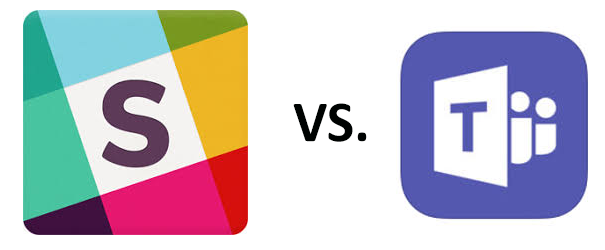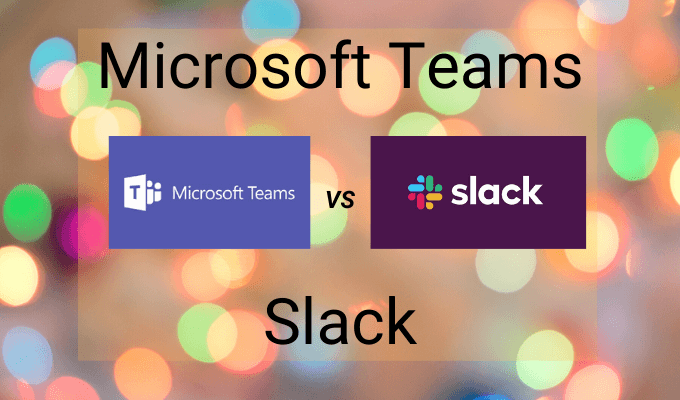
- #Slack vs teams pdf#
- #Slack vs teams archive#
- #Slack vs teams upgrade#
- #Slack vs teams pro#
- #Slack vs teams free#
What stands out from the Teams messaging capability is its Immersive Reader feature. On the other hand, Microsoft Teams users have complete message history on all plans.
#Slack vs teams upgrade#
Users must upgrade to a paid plan to access the entire message history.
#Slack vs teams free#
Additionally, users can also modify their statuses and view others’.Īs for chat history, Slack’s free version displays only the last 10,000 recent messages. In terms of messaging capabilities, both Microsoft Teams and Slack allow their users to chat, share updates, and send files and links to other members. The former offers 5 GB of cloud storage for each user, while the latter provides up to 1 TB of cloud storage per user. Moving on to Microsoft Teams, there is a significant difference between the free plan and paid versions. To access archived messages or files, users will have to upgrade to a paid plan.
#Slack vs teams archive#
However, Slack will archive the oldest files, which won’t be accessible through channels, direct messages, or search results.

Users can still upload files after exceeding the storage space limit.
#Slack vs teams pro#
As for Slack’s Pro and Business plans, each member gets 10 GB and 20 GB of storage, respectively.
#Slack vs teams pdf#
Anything users post on a channel or via direct messages counts toward this limit, including PDF files, documents, pictures, audio, and video files. Slack workspaces can store up to 5 GB of files using the free plan. Both Slack and Microsoft Teams provide users with file storage space for uploading and sharing documents. Having the ability to swiftly and easily share files with coworkers is an essential part of using collaboration tools. Slack also integrates with some Office 365 apps, like Outlook Calendar and Emails, and OneDrive. However, Slack’s free plan only allows up to 10 integrations, while the paid plans grant users access to unlimited apps. Slack users must rely on third-party app integrations such as Google Drive and Dropbox for file storage, sharing, and collaboration. Moreover, Teams also facilitates task management using built-in file editing programs such as PowerPoint, OneNote, Word, and Excel.Įditing a document in Slack requires downloading and opening the file with the appropriate program. Given Teams is part of Office 365, users can easily share and upload files using OneDrive and SharePoint. Meanwhile, Microsoft Teams supports one-on-one and group audio and video calls with screen-sharing features in all of its plans. Once upgraded to a paid plan, Slack offers more accessible ways of collaboration, allowing up to 15 people for voice and video calls and screen-sharing in real-time. The free Slack plan supports one-on-one phone and video calls, but it does not allow screen-sharing for group calls and video conferences. The Office 365 Compatibility enables users to utilize all these other apps while remaining within Microsoft Teams. Users can add apps to Teams by simply clicking the “Add Tab” button, including Word, Excel, OneNote, Planner, and Notes.

One of the critical differences between Slack and Microsoft Teams is its integration with all Office 365 apps. Slack vs Teams: Comparing the Main Featuresĭespite the interface resemblance, Microsoft Teams, and Slack offer different functionalities. Thus, Microsoft Teams triumphs in terms of popularity. However, which one is suitable for your company? In this article, we’ll compare Slack vs Microsoft Teams based on several aspects such as pricing, security, and task management.Ī Statista report listing the most used collaboration tools for US workers shows that 19% used Microsoft Teams, while 7% used Slack. Microsoft Teams and Slack essentially are collaboration tools that help employees stay connected while working on various projects, cutting down the time spent on meetings and keeping track of tasks across the company’s different departments. Moreover, they also play a pivotal role in bridging communication gaps in virtual teams. These two platforms quickly became popular among businesses of all sizes due to their excellent features and benefits. If you work remotely, there’s a good chance you’ve heard of such names as Slack or Microsoft Teams. Thus, when it comes to sharing information, exchanging ideas, and engaging in general conversation with coworkers, most businesses use various online collaboration tools which help to create an enjoyable and relaxed atmosphere. Effective collaboration requires more than just an exchange of communication as it also requires appropriate tools.


 0 kommentar(er)
0 kommentar(er)
